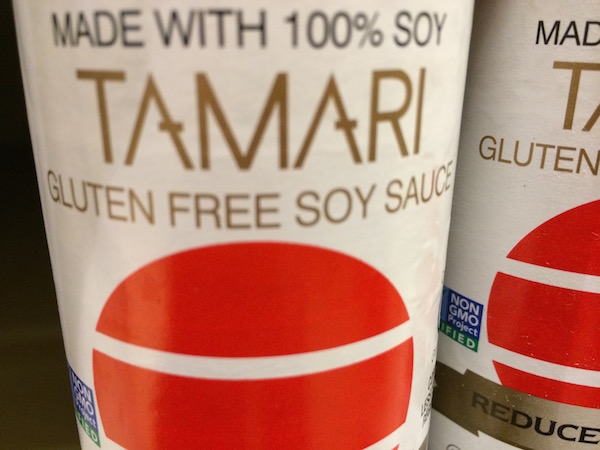What is Tamari?
QUESTION:
What is Tamari? What’s the
difference between Tamari and Shoyu sauce?
ANSWER:
Tamari is made in Japan without the
addition of wheat, making
Tamari sauce gluten-free and the
reason that many people are now reaching for Tamari
sauce instead of the other types of soy sauces.
Although all soy sauces are created by fermenting soy beans, production differences give each sauce unique attributes. The answer to “what is tamari” would not be complete without exploring the differences between Tamari, Shoyu and other soy sauces. Let’s look at Tamari and other soy based sauces in the table below.

Tamari vs Shoyu vs Soy Sauce vs Kecap Manis
What is Tamari?
Let’s begin with an over-simplified version of how natural soy sauces are made: A mixture of fairly equal parts soybeans, red wheat, sea salt, and water is brewed and left to sit in cedar vats for at least 18 months until it becomes fully aged. At this point it is pressed to remove the liquid, or sauce. Tamari does not include any wheat, see below for more information on Tamari.
Mass-produced commercial soy sauces are made both in North America and China using chemicals instead of brewing in order to greatly speed up the normally long fermentation process, resulting in a harsher taste and a loss of natural enzymes.
The quality and proportion of ingredients, brewing (natural) or non-brewing process (commercial), aging time and type of vat used all make a difference in the resulting sauce. Flavors, although always salty, can be pungent to slightly sweet and color can range from golden brown to black, largely depending on which country produces the sauce.
Sauces: Tamari, Soy, Shoyu, Kecap Manis
| Name/Country of Origin | Characteristics | ||
|---|---|---|---|
|
Soy Sauce China |
Soy Sauce is now mass produced in both the Orient and North America. Mass production procedures use chemicals, colors and temperature changes in order to speed up the aging process of the soybeans. These procedures affect the flavor and also deplete nutrition from the soybeans. This sauce is cloudy, dark and strong with a discernible chemical aroma when compared to naturally brewed and fermented sauces. Most Chinese soy sauces are mass produced with flavors and chemicals such as MSG added, whereas Japanese Shoyu sauces are naturally brewed. | ||
|
Tamari Sauce Japan |
Tamari is often called
gluten-free soy sauce because it does not
contain wheat, whereas Shoyu sauces do. Tamari
is traditionally made by extracting the liquid
part of soybean miso. It is generally darker
in color and richer in flavor than Chinese soy
sauce. Tamari is also less salty, making it a
better sauce for dipping. Tamari is produced
in central Japan. Note: be sure to read the label if on a strict gluten-free diet to be sure your brand does not contain any wheat. |
||
|
Shoyu Sauce Japan |
Shoyu is Japanese soy sauce, also made from
soybeans and wheat, but the big difference in
shoyu vs soy is that the procedure
used to make Shoya is a naturally occurring
biochemical processes. Thus, Shoyu is sold
mainly in natural-food stores and has a
less-salty full-bodied flavor when compared to
commercially produced soy sauces. Shoyu is
reddish brown in color. This sauce is gaining in popularity because natural soy sauce has been shown to contain enzymes that aid in the digestion process by promoting the production of beneficial bacterial cultures within the intestinal tract. |
||
|
Kecap Manis Indonesia |
Kecap manis is an Indonesian soy sauce that is made with the addition of palm sugar, making it both thicker and sweeter than soy sauce. Kecap Manis, also known as ketjap manis and sometimes compared to molasses because of it’s thick texture and dark color, is still made from fermenting soybeans and used to flavor Indonesian dishes in the same way as Soy sauce is used in China and Shoyu sauce in Japan. |
Additional Information
To find out how long soy sauces last, check our soy sauce page.










